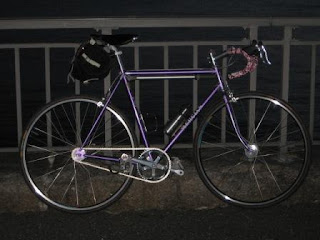The day began with a fine mist and remained overcast. I don't think the air temperature rose above the water temperature.
But the day was actally better than it sounds for cycling. And Arielle wanted to go to the beach.
She got into a coy and flirtatious mood:
And she simply demanded that I take some close-ups.
And another:
And she simply had to show some leg:
For the record, we did about 65 miles together: to Point Lookout and back, via Rockaway Beach. It felt really good.
But the day was actally better than it sounds for cycling. And Arielle wanted to go to the beach.
She got into a coy and flirtatious mood:
And she simply demanded that I take some close-ups.
And another:
And she simply had to show some leg:
For the record, we did about 65 miles together: to Point Lookout and back, via Rockaway Beach. It felt really good.






















